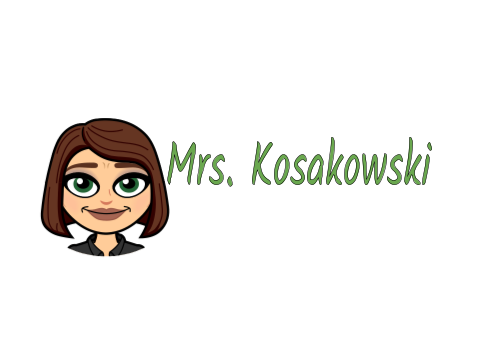Sphero Spectacular: A “Float-tastic” Fifth Grade Parade!

This week, fifth graders in Mrs. Cimmings's class brought the spirit of the Macy’s Thanksgiving Day Parade directly into the classroom—robot edition! As an introduction to Spheros, students designed their own balloon floats, attached them to the robots, and navigated their Spheros through a parade route.
This hands-on challenge allowed students to explore how robotics work, experiment with movement controls, and understand how physical design affects motion. Students brainstormed float ideas, engineered lightweight designs, and practiced carefully steering their Spheros so their creations could “march” the full parade route.
The activity combined creativity, collaboration, and emerging computer science skills. Laughter echoed around the room as students adjusted float designs, avoided “parade collisions,” and celebrated successful runs down the route.
What Skills and Standards Did Students Practice?Massachusetts Digital Literacy & Computer Science (DLCS), Grades 3–5.CS.a
Describe how computing devices follow input commands (students used the Sphero app controls).Demonstrate how robots respond to inputs and produce outputs (movement, lights).Compare and discuss solutions to improve robot navigation and float stability.Demonstrate perseverance and mindset when working through obstacles (wobbling floats, steering challenges).
Essential QuestionsHow do robots respond to the commands we give them?How does the design of an object affect how well it moves when attached to a robot?What strategies help us collaborate, troubleshoot, and improve our ideas?

Staying on Task3rd Graders Tackle Device Distractions
.png)
Even the most tech-savvy students can find it challenging to stay focused when using digital devices. Our 3rd graders recently explored how to manage device distractions and practice healthy digital habits that help them stay on task and ready to learn.
Through class discussions, role-playing, and hands-on practice, students learned key strategies for using technology responsibly like:
Clamshell your device — Close your Chromebook partway when you need to pause and listen.Eyes on your own screen — Stay focused on your work, not your neighbor’s.Focused fingers — Use your hands only for learning tasks, not for clicking around.Brain breaks — Give your mind a rest from screens to refocus and recharge.
Students then practiced these strategies in a lively game of Kahoot, reviewing what they learned while seeing who could stay the most focused.
Massachusetts Digital Literacy and Computer Science (DLCS) Standards AddressedGrades 3–5: Digital Tools and Collaboration
9.DTC.a.1: Identify appropriate and inappropriate uses of technology and describe strategies for using technology responsibly.9.DTC.a.3: Demonstrate understanding of how to use digital tools safely and effectively for learning.10.CAS.a.1: Explain how balance and self-regulation are important when using digital tools.10.CAS.a.2: Describe ways to manage time and attention when working online.
By the end of the lesson, students were confident “focus pros,” ready to apply their new strategies during class time. With a mix of self-awareness, digital discipline, and a few well-timed brain breaks — plus some friendly competition in Kahoot — our 3rd graders are building strong habits for success in the digital age!
 Essential QuestionsWhy is it important to stay focused when using a digital device?What strategies can help me use technology responsibly?How do brain breaks help me use technology in a healthy way?
Essential QuestionsWhy is it important to stay focused when using a digital device?What strategies can help me use technology responsibly?How do brain breaks help me use technology in a healthy way?
Click Smart4th & 5th Graders Learn the Rules of Online Safety
.png)
Students learned about:
Using secure links (look for the padlock and “https” in a web address)
Checking links before clicking to avoid suspicious or misleading websites
Recognizing and avoiding scams that try to trick users into sharing personal information
Through interactive discussions and examples, students practiced identifying safe and unsafe online scenarios. The lesson wrapped up with a rousing game of Kahoot, where students tested their knowledge in a fast-paced, friendly competition that brought plenty of excitement — and lots of learning!
Massachusetts Digital Literacy and Computer Science (DLCS) Standards AddressedGrades 3–5: Digital Tools and Collaboration9.DTC.a.3: Demonstrate an understanding of how to use digital tools (e.g., browsers, search engines, websites) safely and responsibly.9.DTC.b.1: Explain why passwords, privacy settings, and secure websites are important to protect personal information.11.SI.a.1: Describe how to evaluate digital sources for accuracy, relevance, and reliability.11.CAS.a.3: Identify strategies for dealing with cyberbullying, scams, phishing, and other online risks.
By the end of the lesson, students walked away feeling more confident about staying safe online — and had a blast showing what they knew in Kahoot! It was a perfect mix of digital safety, critical thinking, and fun — all skills that will serve them well as responsible digital citizens.
 Essential QuestionsHow can I recognize if a website or link is safe to click?Why is it important to protect my personal information online?What steps can I take if I think I’ve found a scam or suspicious website?
Essential QuestionsHow can I recognize if a website or link is safe to click?Why is it important to protect my personal information online?What steps can I take if I think I’ve found a scam or suspicious website?

.png)
.png)